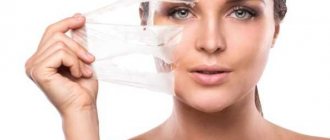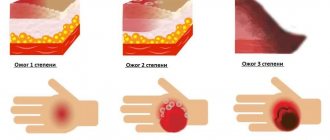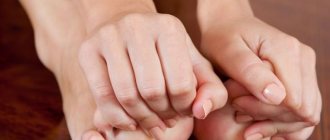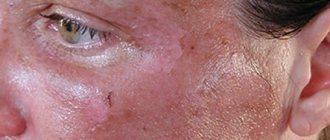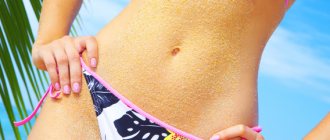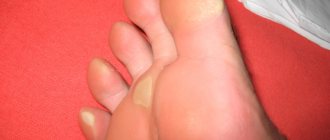Tanning is a protective reaction of the skin to the harmful effects of ultraviolet radiation.
UV rays are invisible to the human eye. They come in 3 types: UVA, UVB and UVC types. The latter do not reach the surface of the earth, so we will not consider them, but the first 2 types can penetrate the skin, causing burns and more serious long-term consequences.
Depending on the ability to tan, there are 6 skin phototypes:
I. Celtic - people with very fair skin and hair, blue eyes, sometimes with freckles on their faces. Short-term exposure to the sun usually results in burns.
II. Nordic - just like the first type, it is characterized by light skin color, darker hair - light brown or light brown, eyes: gray, green, or brown. The skin is practically resistant to tanning and quickly gets burned.
III. Dark European - differs from the previous type in a darker shade of skin, hair and eyes. People with this phototype already tan much better, but with prolonged exposure to the sun, they can still get a moderate burn.
IV. Mediterranean - skin color closer to dark, dark brown or black hair, mostly brown eyes. Tanning occurs quickly, burns rarely occur.
V. Indonesian - people with darker skin, hair and eyes are also dark. The tan lasts almost all year round.
VI. African American - characterized by a very dark shade of skin, eyes and hair. Such people never get burned because their skin contains a huge amount of melanin pigment.
Accordingly, types I and II are the most sensitive to the action of UV rays. Types III and IV are moderately sensitive.
Phototypes III and IV are more typical for Ukraine.
Sunburn is exactly the same tissue damage as a thermal burn, but its manifestations do not occur immediately, but more slowly, over several hours.
How and why do sunburn blisters occur?
The formation of large and small blisters on the skin from a sunburn indicates that the body has not coped with the load caused by exposure to sunlight. Their appearance is a normal reaction, due to which the body tries to protect the deep layers of the skin and internal organs from ultraviolet rays. In this regard, the cells of the epidermis begin to collapse: the surface layer of the skin rises slightly above the healthy areas, forming cavities-bubbles. A clear or yellowish liquid accumulates inside them.
Why do blisters appear after sunbathing and how dangerous are they?
Long-term exposure to ultraviolet radiation on the skin leads to detachment of its top layer - the epidermis. In this case, small blood vessels dilate, the permeability of their walls changes, and intercellular edema occurs. The top layer of skin rises above healthy areas, forming a cavity. Plasma, the liquid component of blood, accumulates in this “pocket”, resulting in blisters with liquid appearing on the skin after sunbathing. They are separated from the outside world by a thin film, which can easily be injured if handled carelessly.
Such skin lesions are classified as second degree burns. Skin regeneration usually takes at least 2-3 weeks. During this time, the upper thin skin dries out and becomes rough, and in place of the burned area, a layer of young light pink skin is formed, which will gradually acquire normal pigmentation.
Some people treat the appearance of burns and blisters on the body after sunbathing very lightly: they do not consider such lesions dangerous, they pierce the blisters on their own and tear off the dead layer of skin. However, you need to know that the formation of blisters is an indicator that the body has been seriously damaged: it is through the appearance of blisters that it tries to protect the deeper layers of the skin and internal organs from the destructive effects of sunlight.
An additional danger arises if the integrity of the bubble is violated. Puncture of the film and entry of pathogenic microflora into the blister cavity can lead to infection of the bottom of the burn, which is the wound surface. If it becomes infected, the risk of inflammation increases, followed by suppuration, the formation of weeping ulcers and erosions. In the future, this can lead to the appearance of unaesthetic scars and scars, which are not so easy to eliminate. Therefore, it is not recommended to puncture blisters after sunbathing on your own - you should go to the hospital for this.
If the bubble has not been infected, there should be no traces of it. However, it must be taken into account that burned skin is more prone to wrinkles. This is explained by a decrease in its elasticity due to loss of moisture. In addition, age spots may appear on it.
Cases in which blisters appeared in a child, pregnant woman or elderly person after sunbathing deserve special attention.
How to distinguish blisters, blisters after the sun from allergies?
Some people suffer from photodermatitis, an allergy to sunlight. This concept should not be confused with sunburn, since their symptoms, causes and mechanism of development are different.
Photodermatitis is the result of a malfunction of the immune system, while sun blisters on the shoulders, back, arms, face and other parts of the body appear when epidermal cells are destroyed by exposure to sunlight.
The signs of photodermatitis and sunburn are also different. An atypical reaction of the immune system manifests itself in the form of thickening of the skin, the formation of papules and weeping on it, increased skin pattern, severe itching and pigmentation disorders. And only in some cases, small bubbles filled with clear liquid may appear on the skin. As for blisters from sunburn, they are usually not accompanied by the appearance of symptoms characteristic of photodermatitis.
Treatment
Treatment of sunburn should include medications and traditional methods. When the first symptoms of sunburn appear, you should begin providing first aid.
Also interesting: Swelling after sunbathing, causes, treatment, prevention
First aid
If a blister appears on the skin after sunbathing, you need to start providing first aid, which consists of the following:
- Be sure to go to a place protected from direct sunlight.
- Give the victim water to drink, maybe with lemon juice, to restore water balance.
- Apply ice or a wet towel to the affected areas. In this case, the ice must be wrapped in cloth.
- We apply sunscreen preparations to the skin to stop the inflammatory process, relieve redness and swelling.
Medications
To effectively treat sunburn, the following medications are prescribed:
- Hormonal ointments quickly relieve the symptoms of sunburn. Such ointments should only be prescribed by a doctor. This could be Fluorocort or Afloderm.
- To eliminate the pain of burned areas, medications with panthenol are prescribed.
- To eliminate the symptoms of sun allergy, antihistamines are prescribed, for example, Cetrin or Loratadine.
- In order to stop the inflammatory process, local antiseptics are prescribed, for example, Lidocaine or Menthol.
- In order to relieve pain and normalize body temperature, take antipyretic drugs, for example, Ibuprofen or Paracetamol.
- Drugs to accelerate the regeneration of affected tissues, for example, Lifuzol or Bepanten.
- In difficult cases, when an inflammatory process is observed, antibacterial agents are prescribed.
- Vitamins E and B accelerate the recovery of affected skin.
- Sorbents are necessary to remove toxic substances from the body.
Traditional medicine
Traditional medicine can be used to treat sunburn.
Some effective home remedies include the following:
- Cold compresses should be applied to the affected areas of the skin. In addition to plain water, you can use decoctions of medicinal herbs, such as chamomile, for compresses. Apply compresses several times a day until the symptoms of sunburn are completely relieved.
- Vinegar relieves redness and swelling after sun exposure. In this case, be sure to dilute the vinegar with cold water.
- At the first symptoms of sunburn, crushed cucumber or potatoes should be applied to the skin. We repeat the procedure several times a day.
- To eliminate the inflammatory process and accelerate the regeneration of affected tissues, you can use fresh aloe juice.
- In order to avoid skin infection and relieve pain, we use turmeric. Dilute the dry powder with water and apply to the affected skin.
- Natural honey is very good at destroying pathogenic bacteria and preventing skin infections. For best effect, it should be mixed with turmeric and applied to the affected area of the skin.
- In the first stages, fermented milk products will help quickly relieve redness and swelling. In this case, you should choose only natural sour cream or yogurt without preservatives.
- Baking soda baths can help soothe irritated skin after UV exposure.
- Steam oatmeal in water, apply to the skin and secure with a sterile bandage for several minutes.
- Chop lettuce leaves and make compresses several times a day.
Also interesting: What to do if your face peels off after sunbathing, reasons, first aid
Signs of sunburn
The first sign of sunburn is redness of the skin caused by dilated capillaries. In this regard, plasma from small blood vessels seeps into the papillary layer of the epidermis, separating its upper (horny) layer and forming a bubble in the cavity of which plasma accumulates. The expansion of capillaries and leakage from plasma also causes the second frequent companion of sunburn - swelling of the skin.
In addition to the indicated hyperemia and swelling, blisters after sunburn are accompanied by the following symptoms:
- skin itching;
- painful sensations when touching burned areas of the skin;
- an increase in local temperature (if there are extensive burns, the general body temperature may also rise);
- weakness, muscle aches, dizziness, headache, nausea (these symptoms are present in the presence of severe sunburn).
Symptoms of blisters on the skin after sunbathing
The first sign of sunburn is redness of the skin caused by dilated capillaries. The local temperature rises, the burned area becomes painful to the touch, swelling occurs, itching and flaking appear, and the skin loses its elasticity.
Bubbles usually do not appear immediately, but several hours after the first symptoms of a burn appear. They look like round bubbles containing a clear liquid inside. In rare cases, hemorrhagic blisters may appear.
If a large area of skin is affected, in addition to the formation of blisters, more serious symptoms may occur. It could be:
- loss of consciousness;
- dizziness;
- increased body temperature and feeling of intense heat;
- headaches and muscle pain;
- photophobia;
- changes in heart rate, frequency of inhalations and exhalations, suffocation;
- changes in blood pressure;
- nausea, vomiting.
It must be taken into account that the intensity of the symptoms of blisters depends not only on the duration of exposure to direct sunlight, but also on other factors - for example, on the skin phototype. Fair skin with freckles is more at risk of developing large, painful sun blisters than dark, dark skin. In addition, you need to take into account the geographic area in which the burn was received: even a short stay in the sun in the equator region, as well as in Australia and New Zealand, is much more dangerous than long-term sunbathing in central Russia.
The intensity of blistering symptoms after sunburn is also influenced by the use of a number of medications. If a person takes certain types of antibiotics, antipsychotics, antidepressants, cardiotonic and antiarrhythmic drugs, the first signs of sunburn may appear much faster and be more intense. This is due to the fact that these drugs contain substances that are phototoxic.
Sunburn with blisters: what to do first?
If you notice redness on the skin and the appearance of blisters filled with liquid, the first thing you need to do is go to cover. In this case, it is advisable not just to move under an awning or umbrella, but to go into a cool room. If this is not possible, you can soak a beach towel or cotton clothing in water and cover the burned areas.
A cool shower will help reduce pain and reduce fever (the temperature should not be higher than 20 degrees). You need to make sure that the water jet is not too strong, as this may cause the blisters to burst.
A positive effect can be achieved by applying a cold (but not icy) compress to the affected areas. For example, this could be a bandage soaked in water.
There is a common belief that fresh burns should be lubricated with oil or greasy ointment. However, this cannot be done, since fat creates a thin film on the surface of water blisters from sunburn, blocking the access of oxygen and impairing heat transfer.
Another common misconception regarding first aid for burns is to treat the burned area with urine. This misconception can lead to infection of the affected area of the skin, since secondary urine contains toxic substances and may also contain pathogenic bacteria.
Treatment for sunburn blisters
Therapy should be aimed at solving the following problems:
- Elimination of body dehydration.
- Combats swelling, soreness and itching.
- Protection of the wound surface from infection.
- Acceleration of skin regeneration processes.
To achieve these goals, medications, diet and drinking regimen can be used. The choice of an appropriate treatment method should be made taking into account the area and depth of skin lesions.
How to treat blisters after sunbathing: drug therapy
If large areas of the body have been affected as a result of sunbathing, and if the formation of blisters is accompanied by fever, muscle pain, headache, nausea, dizziness or vomiting, treatment should be prescribed by a specialist. If you experience these symptoms, be sure to consult a doctor and do not rely on self-medication. How to treat sunburn blisters?
- Immediately after receiving a burn, you should take a cool shower or place the burn site under running water.
- Large blisters must be opened, since the thin film can burst on its own at the wrong moment and an infection can get inside the bubble. The opening of the bladder should be performed by a medical professional - a doctor or nurse. The cavity of the bladder is pierced with a sterile needle, and the liquid inside it is removed using a sterile bandage or napkin. The thin skin is gently pressed to the bottom of the bladder and treated with a liquid antiseptic, after which the burned area of skin is covered with a not too tight gauze bandage.
- To reduce skin soreness, lower temperature, eliminate headaches and muscle pain, painkillers and antipyretics are prescribed. These may be non-steroidal anti-inflammatory drugs (paracetamol or ibuprofen).
- To reduce the likelihood of infection, you can use antiseptic lotions. To do this, prepare a weak pink solution of potassium permanganate, moisten a clean bandage in it and apply it to the burned areas of the body. It is not advisable to use alcohol-containing products, as they can cause irritation.
- • Vitamin therapy helps speed up the process of skin regeneration and improve the state of local immunity. For example, you can take a course of vitamins E, A and D.
- If the blister has become infected, resulting in inflammation and suppuration of the wound, local antibiotics are prescribed. In this case, an important role is assigned to ensuring sufficient outflow of purulent exudate. Antibiotics may also be prescribed to take by mouth.
Diet and drinking regime
To replenish lost fluid, it is recommended to drink about 1.5-2 liters of fluid daily. This can be clean drinking water, still mineral water, fresh vegetable or fruit juices, weak green or black tea.
Nutrition plays an important role in skin regeneration. To speed up its recovery from sun blisters, it is recommended to eat foods rich in protein, which is a building material for skin cells, vitamins (especially A and E), fresh fruits, herbs and vegetables.
How to care for burned skin and what to apply to sunburn blisters?
Compared to healthy skin, burned areas of the body require more careful and delicate care. This is due to the slight vulnerability of the blisters, as well as skin dehydration, loss of elasticity, peeling and itching.
To speed up the process of skin regeneration, it is recommended to avoid taking hot baths and showers during treatment. The temperature of the water used for hygiene procedures should be no more than 21 degrees. When taking a shower, it is advisable to replace simple soap with more delicate products that do not contain parabens, fragrances and dyes - for example, La Cree cleansing gel.
During skin restoration, it is necessary to provide it with additional protection from ultraviolet radiation. To do this, you should avoid prolonged exposure to the sun: if possible, it is advisable not to leave the house for several days after receiving burns.
Since blisters after sunburn are painful and easily damaged, it is recommended to wear loose clothing made of soft materials while the skin is recovering. It should cover the body as much as possible - long-sleeved shirts, wide trousers or skirts are suitable.
To speed up the process of skin regeneration, it is important to provide them with gentle care, which consists of creating conditions for hydration and nutrition. Usually creams, gels and sprays are used for this. What should you apply to your skin if blisters appear from tanning?
Avoid using vegetable oils and fat-based ointments. There is a widespread belief that it is useful to smear fresh burns with sea buckthorn oil, lard and other fatty substances. In fact, it is strictly forbidden to do this, since fat creates a thin film on the surface of the skin, which prevents normal heat transfer and contributes to an increase in heat inside the blister.
Instead of greasy ointments and oils, it is recommended to use light hydrophilic-based products - they are quickly absorbed without leaving a sticky film, provide the necessary hydration and speed up the healing process. For example, you can use La Cree cream for sensitive skin. Due to the presence of natural plant extracts and active ingredients in its composition, this product has a healing, soothing, softening and anti-inflammatory effect. As a result of using the La-Cri restorative cream, itching and redness of the skin are reduced, it is nourished and moisturized. Due to the absence of hormones, fragrances and parabens, the product can be used for children from birth and pregnant women.
Sunburns (blisters): how to treat?
After cooling the burns with a cool shower or compresses, you can proceed to further actions. How to treat sun blisters? If their area is large and there is pronounced pain, it is better to consult a specialist. The doctor will assess your condition and recommend the best way to deal with burns.
If burns are accompanied by severe pain, you can take a pain reliever. If your body temperature increases significantly, you may need to take antipyretic medications.
In the first few days after you receive a burn, using fat-based creams and ointments is prohibited. Instead, it is recommended to use hydrophilic-based products - light creams and gels that contain panthenol. For sunburn blisters, you can use La Cree Regenerating Cream for Sensitive Skin. It contains panthenol, bisabolol, avocado oil, natural extracts of string, walnut and violet. Their complex effect on the burned area of the skin helps to reduce redness and itching, regenerate the affected skin, moisturize and nourish it. In addition, the product has anti-inflammatory and soothing properties. The cream does not contain hormones and is approved for use for children from birth and pregnant women.
How to prevent sunburn and blisters
To avoid the formation of blisters and burns on the skin, it is recommended not to go out in the sun during the period of its greatest activity - from 10.00 to 17.00. If you cannot avoid being in direct sunlight, protect your body as much as possible with clothing made from natural materials: cotton and linen will partially protect your skin from overheating. Keep in mind that even in cloudy weather, the risk of sunburn and blisters is still quite high.
It is extremely important to use special products that protect the skin from ultraviolet radiation - for example, La Cree sunscreen milk. Depending on your natural skin tone, you can choose the appropriate level of protection - SPF 30 or SPF 50. The product contains special UVB and UVA filters that reduce the negative effects of sunlight and help maintain skin elasticity. The milk also contains vitamins A and E, aloe and avocado oils, licorice extract and bisabolol: these components produce a protective, regenerating, soothing and anti-inflammatory effect, nourish and moisturize the skin.
Clinical researches
The conducted clinical study proves the high efficiency, safety and tolerability of products for daily skin care of children with mild and moderate forms of atopic dermatitis and during remission, accompanied by a decrease in the quality of life of patients. As a result of therapy, a decrease in the activity of the inflammatory process, a decrease in dryness, itching and flaking was noted.
The properties of the products are confirmed by a clinical study conducted jointly with the St. Petersburg Union of Pediatricians of Russia.
Fighting blisters after sunburn using traditional medicine
For minor burns, and after consulting a doctor, you can use some traditional medicine tips. How to apply sunburn if blisters appear? The following home remedies are suitable for this purpose:
- Aloe juice. Cut off the fleshy aloe leaf, rinse under running water and cut lengthwise, then lubricate the burned area of skin.
- Chamomile decoction. Pour a tablespoon of dried flowers into a glass of boiling water and leave until it cools completely. Lubricate blisters with a cotton pad soaked in the resulting infusion.
- Fresh cucumbers. Cut the cucumber into thin slices and apply to the sunburn blister. Remove after heating and replace with new cucumber slices.
You need to know that the folk remedies described above are not suitable for the treatment of serious skin lesions.
Prevention measures
In order to avoid sunburn, you should follow simple rules for safe tanning:
- You can sunbathe only before 10 a.m. or after 4 p.m.
- You need to start sunbathing 20 minutes a day so that your skin gets used to intense ultraviolet radiation.
- Be sure to apply high-quality sunscreen cosmetics with a high factor of 50 to clean skin a few minutes before going out in the sun.
- You should not sunbathe with cosmetics, especially those containing alcohol.
- Before leaving, you need to stop taking medications that affect hormonal levels.
- It is better to avoid tanning during pregnancy, lactation and menstruation.
- People with white skin should not be exposed to the sun for long periods of time. It's better to sunbathe under an umbrella.
- In summer, you need to wear light-colored clothes made from natural fabrics. You should also wear wide-brimmed hats and sunglasses.
- You can’t stay in the water for a long time, because your face and shoulders burn first.
- Before tanning, you should not do chemical peeling or laser removal of unwanted hair.
- After sunbathing, apply creams with vitamins and minerals to dry skin to maintain water balance.
- You need to increase your drinking regime, give up fatty and spicy foods, as well as alcohol.
- People with white skin are not recommended to use products that attract ultraviolet radiation.
- You cannot independently increase the time you spend in the solarium. The duration of the first procedure should not exceed 3 minutes.
How long does it take for sun blisters to go away?
The skin recovery time depends on a number of factors: the area of the affected areas, general health, the presence of concomitant diseases, and compliance with medical recommendations. To speed up the regeneration of the skin, it is recommended to maintain a drinking regime and eat right. During the recovery period, it is recommended to consume foods rich in protein, since it is the building material for skin cells.
Sources:
- V.V. Chebotarev, N.V. Chebotareva, M.S. Askhakov, E.V. Bronnikova, Sensitive skin: causes, methods of therapy, journal Medical Bulletin of the North Caucasus, 2015
- I.I. Ryumina, V.V. Zubkov, Newborn skin care, Healthy Child magazine, 2017
- N.L. Rybkina, Modern approaches to newborn skin care: pediatrician tactics, journal Bulletin of Modern Clinical Medicine, 2014
